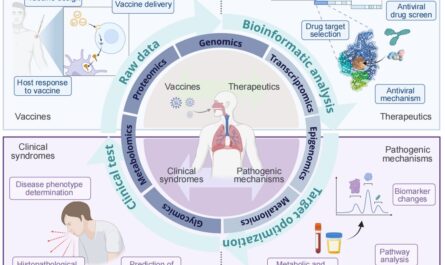Atomic Force Microscopy – A Revolution in Nanoscience
Atomic force microscopy (AFM), also known as scanning force microscopy (SFM), is an analytical technique used to study surface properties and structures at the nanoscale level. By using a sharp probe and raster scanning over a sample, the AFM generates images with resolutions down to fractions of a nanometer, allowing it to visualize individual atoms and bonds. Since its invention in 1986, the technique has emerged as a versatile and powerful nanoscale characterization tool widely used across many scientific fields.
How Atomic Force Microscopy Works
At the heart of the Atomic Force Microscope is a microscale cantilever with a very sharp tip on its end. As the tip is scanned over a sample surface, it detects atomic-scale variations in properties like height, adhesion, magnetism and more. A laser reflection technique is used to precisely measure the cantilever’s deflection. When the tip interacts with surface features, the cantilever bends slightly according to Hooke’s law. Measuring these deflections allows reconstruction of 3D topography maps with sub-nanometre resolution.
In contact mode AFM, the tip gently touches the sample surface and monitors deflections as it moves line by line. Non-contact or tapping mode scans the cantilever close to but not touching the surface. This oscillating mode reduces lateral forces on delicate samples. Variants like magnetic force microscopy detect magnetic forces from sample domains. Scanning electrochemical microscopy maps ion migration during electrochemical reactions. With these modes and scanning capabilities, the AFM opens new vistas into material properties and processes.
Visualizing Biological Structures
The AFM’s sub-nanometer resolution makes it invaluable for imaging biological systems that span nanometer size scales. It has been used to map protein-protein interfaces, study membrane proteins and visualize pathogens like viruses with unprecedented clarity. Time-lapse AFM elucidates biological processes like folding of DNA and proteins. Environmental chambers allow imaging in physiologically relevant liquid environments.
One of the earliest atomic force microscope imaged individual DNA molecules as double helical polymers with a pitch of about 34 angstroms, revolutionizing our structural understanding of heredity at the molecular level. Further developments made it possible to track molecular motors in real time, opening up live cell biology studies. Today, AFMs are routinely used to characterize biomaterials and develop targeted drug delivery systems with nanoscale control.
Revealing Nanoscale Phenomena
Beyond direct surface mapping, the atomic force microscope enables measurement of fundamental physical properties like adhesion, friction, stiffness, conductivity and magnetism with nanoscale resolution. Pioneering studies used AFM tips to manipulate and position individual carbon nanotubes, showing how properties emerge at the nanoscale. Further innovation unlocked in situ AFM imaging inside scanning electron microscopes and transmission electron microscopes.
Combined with these techniques, the atomic force microscope provided the first visual confirmation of quantum confinement effects in quantum dots. It directly imaged molecular self-assembly processes and traced the growth of two-dimensional materials like graphene. Real-time AFM continues advancing our knowledge of phenomena like ferroelectric switching, superconductivity and topological insulators down to the level of individual building blocks. For material characterization across multiple scales, AFM is unsurpassed in versatility and impact.
Expanding Applications of Atomic Force Microscope
Advances in probe technology, scanning modes, data analysis and integrated systems have pushed AFM applications far beyond academia. In nano electronics R&D, AFMs facilitate nanofabrication of next-generation devices by precisely arranging atoms and molecules. Nano manufacturing leverages AFM-based nanolithography, non-patterning and nanoscale 3D printing.
AFMs are also deployed for quality control in semiconductor fabs and hard drive industries, where they scan for defects down to the atomic scale. High-speed AFMs developed for commercial applications enable timely nanoscale failure analysis and metrology. Even food science and forensics employs AFMs to study texture, identify contaminants and authenticate materials based on unique nanoscale fingerprints.
As atomic force microscope further develops advanced modes, faster scanning capabilities and truly multi-dimensional analysis, its ability to impact diverse fields will continue expanding. By directly visualizing processes and properties at the fundamental scales of nature, AFM plays a seminal role in fulfilling Richard Feynman’s vision of a field “too small to see”. It remains at the forefront of nanoscience research as well as real-world engineering applications down to the atomic level.
*Note:
1. Source: Coherent Market Insights, Public Source, Desk Research
2. We have leveraged AI tools to mine information and compile it.



